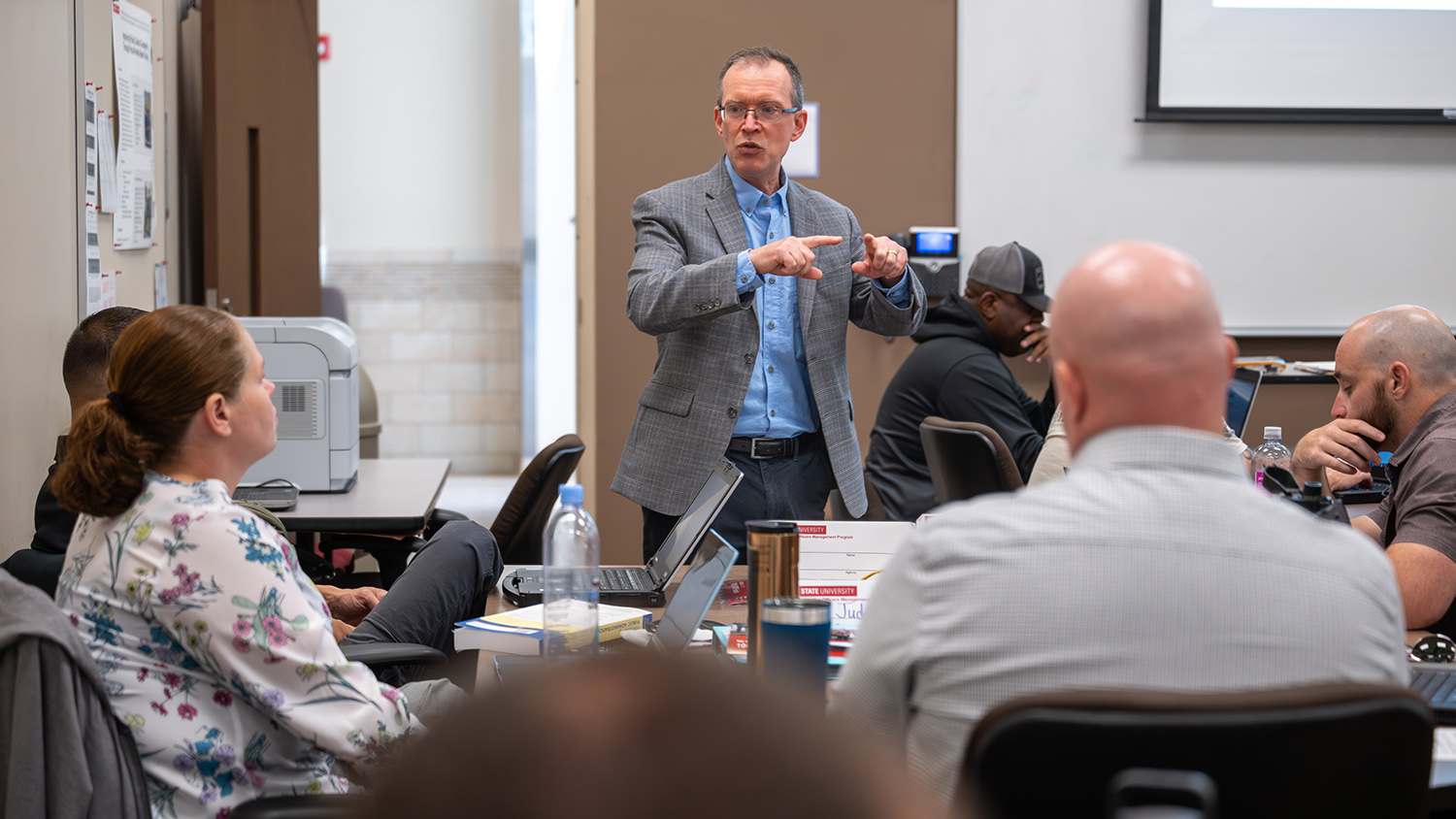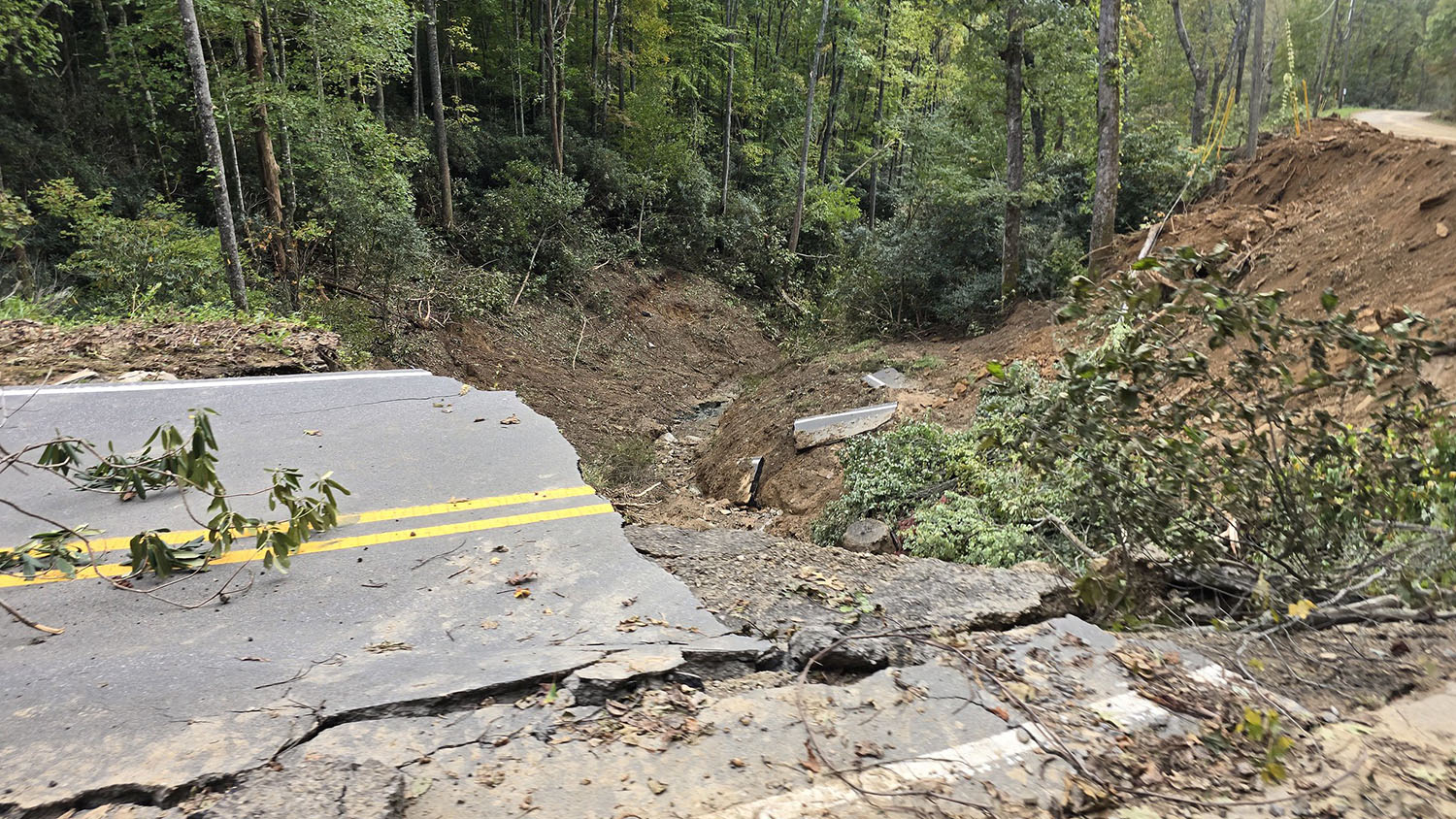Reporting for (Hurricane) Duty: Student Directs NC County’s Emergency Communications

As many of her neighbors evacuated ahead of Hurricane Florence, Brandy Osborne went to work.
The emergency communications director for Carteret County on the North Carolina coast, Osborne stayed behind with a team of first responders, emergency management personnel and essential county employees to provide emergency services during the storm.
For more than a week, she and her colleagues worked around the clock to answer 911 calls, direct emergency response and aid in initial recovery efforts. They rode out the hurricane at the Morehead City Police Department, which also houses the county’s Emergency Operations Center and Emergency Communications Center.

“It was like the hurricane that never ended,” says Osborne, who’s also a student in NC State’s online Leadership in the Public Sector program. “At one point, we actually thought the radar on our screens was frozen because the storm was moving so slow.”
After making landfall on Sept. 14, Hurricane Florence delivered days of heavy rains, high winds and storm surge to the Carolinas, leaving a devastating trail that’s been life altering for many in its path. For Osborne, the damaging effects of the hurricane have posed challenges at work and at home. Her house was one of many in her community to suffer from flooding, downed trees and other impacts.
It’s been a lot to manage, but Osborne considers herself lucky; many of her neighbors didn’t fare as well. And as the recovery process continues, she’s motivated by the resiliency of everyone affected by the storm.
“I have never seen such self-sustaining people,” Osborne says. “They experienced so much catastrophic loss, but they pick up and rebuild. It’s amazing to see.”
Planning for the Worst
Osborne moved to Carteret County in May to start her new job as director of emergency communications. In her role, she runs the county’s 911 Center and manages a staff of about 30 dispatchers and other personnel.
As Florence approached the North Carolina coast, Osborne’s duties also included helping the county prepare for the storm. Her tasks included drawing up a plan for how first responders would communicate during the storm. That required securing additional radios from the state and outlining what channels would be used for what purposes.
[pullquote color=’red’ align=’right’]Things never go exactly according to plan, and you have to roll with the punches.[/pullquote]
“Things never go exactly according to plan, and you have to roll with the punches,” Osborne says. “We had a good idea of what we needed to do, but we didn’t necessarily have a plan for a hurricane that lasted 36 hours.”
A few days before Florence arrived, Carteret County advised residents to prepare for the worst. Carteret was one of nearly two dozen North Carolina counties to issue mandatory or voluntary evacuations to residents, according to the state’s Department of Public Safety.
Knowing that they’d be working during the storm, Osborne and her husband, Luke, made preparations ahead of time at their home in Beaufort. They also took their two dogs, Kimber and Toby, to a family member’s home in the mountains.
Upon returning home, Osborne reported for work on Sept. 12. She didn’t leave for 8 days.
Working Under Duress
As Florence made landfall and slowly trudged westward, the severity of the storm became clear.
Flood waters rose quickly in Carteret County’s Newport community, Osborne says, threatening the lives of residents who didn’t evacuate. The situation became more dire when the hurricane damaged the cell phone tower in the area, making it difficult for those in danger to call for help.
Local fire departments and swift-water teams rescued about 400 people from their homes, Osborne says. She and her team helped facilitate radio conversations between the first responders on the ground.

Call volume to the 911 Center increased as the storm moved out. Callers reported trees through their homes, local flooding and other damage to personal property.
The 911 Center itself wasn’t spared from the storm. The wind and rain damaged the roof of the building, allowing water to leak into working areas. Osborne says her staff didn’t flinch; they put plastic trash bags over their monitors and kept working.
“I’ve never been more proud of a group of people,” Osborne says. “They came to work before the storm and knew they’d be there until it calmed down.
Every single person knew their home may be flooded; they may not have a house to go home to. But they put their game face on, did their job, and did it well.”
Surveying the Damage
When Osborne got a chance to check on her own house after the storm, the damage was already done.
Her garage had flooded and was covered in thick black mud. The waters also ruined both her cars and seeped into the underside of her home. Thankfully, it didn’t reach the first floor.

The power was out for a few days across the county. When it came back on, her air conditioning unit caught on fire.
“Part of the reason everything flooded was because of storm surge. The surf comes in,” Osborne says. “I guess waves crashed into my A/C unit.”
After surveying the damage, Osborne returned to work for a few days. When she got some time off at the end of the month, she reunited with her dogs in the mountains and started the cleanup process at home.
“In the grand scheme of all of this, I am lucky,” Osborne says. “A lot of people experienced much more catastrophic loss than we did.”
Redefining Applied Learning
In the midst of all the chaos, Osborne somehow found time for another one of her responsibilities: school.
In her final year of NC State’s Leadership in the Public Sector program (LPS), Osborne is taking two courses that seem especially relevant to recent events:
- Technological Catastrophes.
- Essentials of Fundraising for Leaders in Public and Nonprofit Institutions.
The Technical Catastrophes class came into play when the hurricane took out the county’s cell tower.
“So many people don’t keep landlines anymore,” Osborne says. “Once a cell tower goes down and the internet goes down, people have no way to summon help when they need it.”
And her fundraising course provides lessons for the recovery process.
[spotlight-box label=”After Hurricane Florence” heading=”Support Our State” cta=”Learn More” url=”https://www.ncsu.edu/hurricane-florence-response/”]In the wake of the storm, NC State is joining the effort to recover and rebuild. Learn how you can help communities impacted by Hurricane Florence.[/spotlight-box]
“Disasters are not just about fixing imminent problems,” Osborne says. “They linger a long time and you have to deal with issues like sheltering families and managing donations after the storm.”
Leadership in the Public Sector is an online degree-completion program designed for students working in the public or nonprofit sectors. Osborne says she chose the program because it directly aligns with her career, and she hasn’t been disappointed. “I’ve learned so much about what it takes to be a good leader, and how leadership fits into the world,” she says.
She’ll continue to apply the skills she’s learned from the program at her job — and as her community recovers.
“We will continue to be an information hub for residents; people who don’t know where to turn always turn to the 911 Center,” Osborne says. “Longer-term, there are still residents who are displaced and don’t have a home to go back to.
“The next piece is helping them put their lives back together.”


